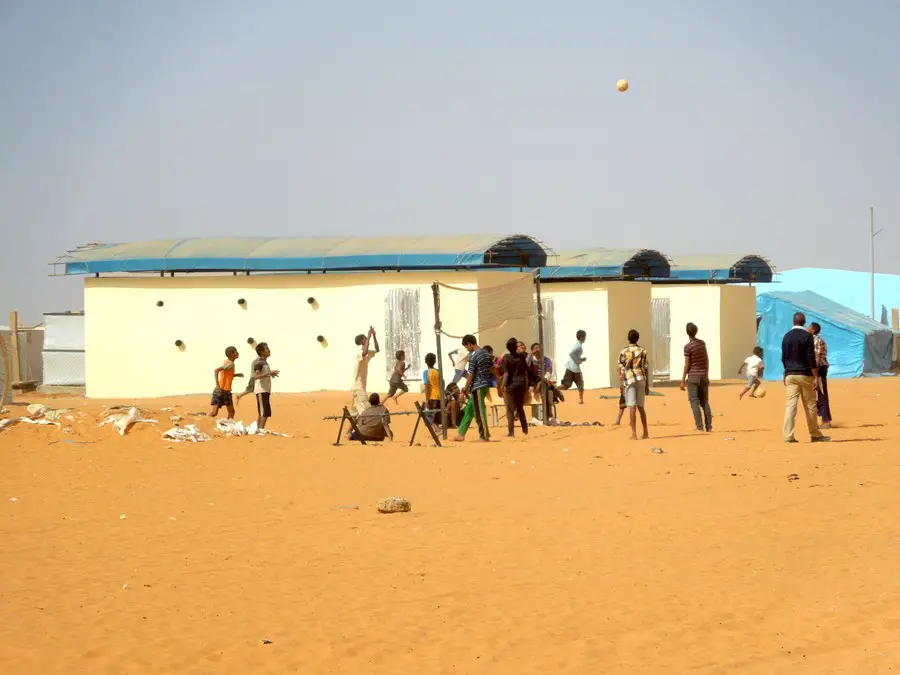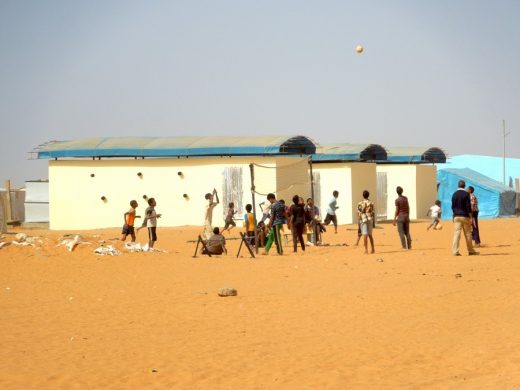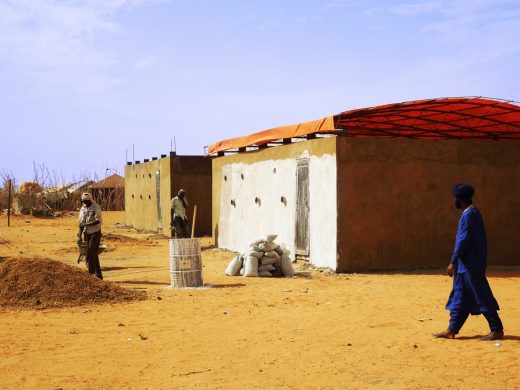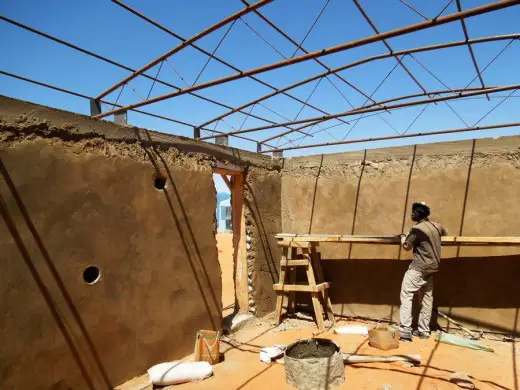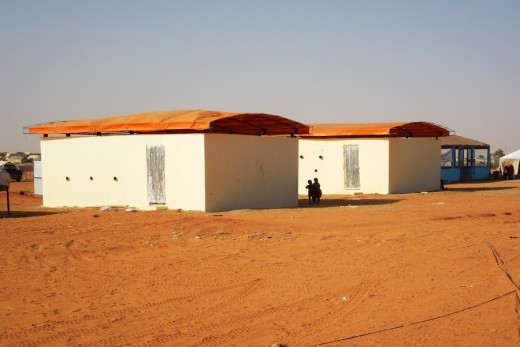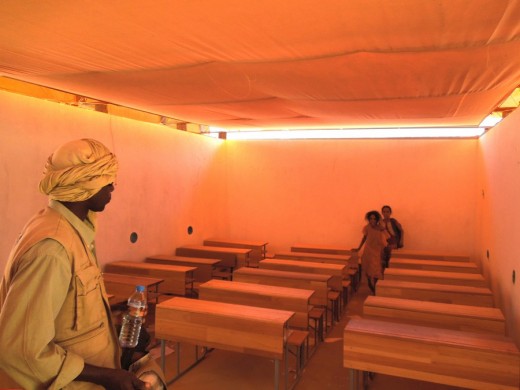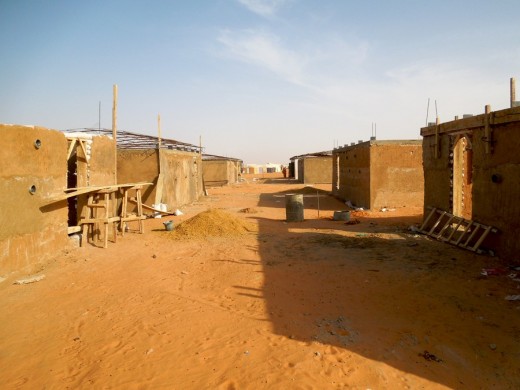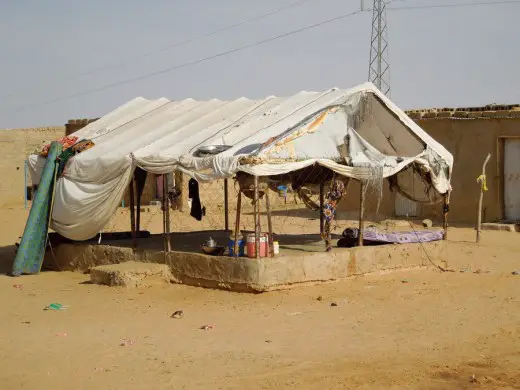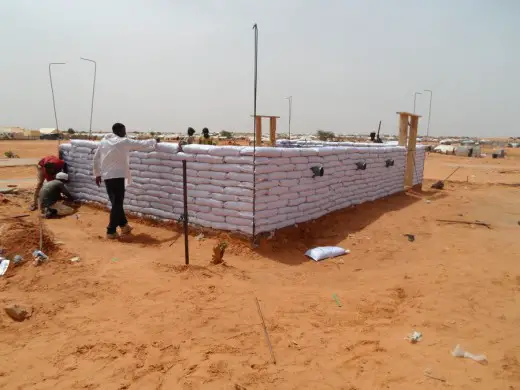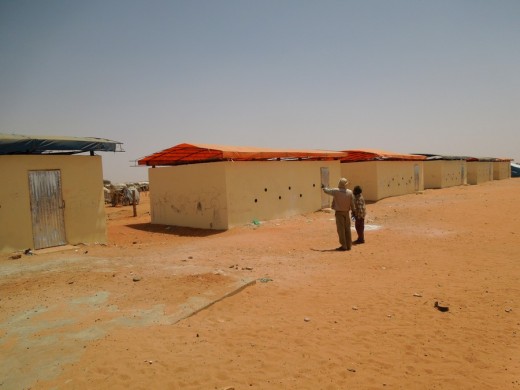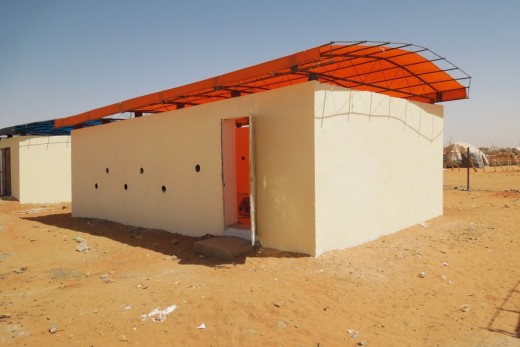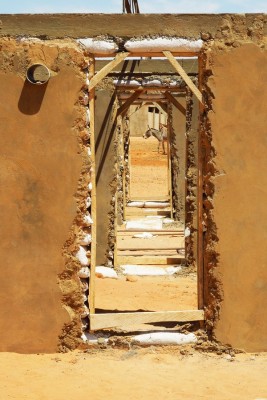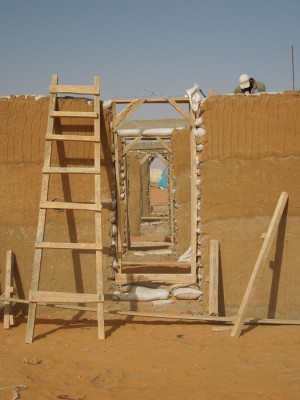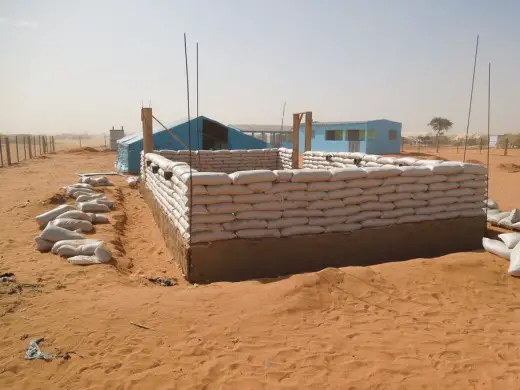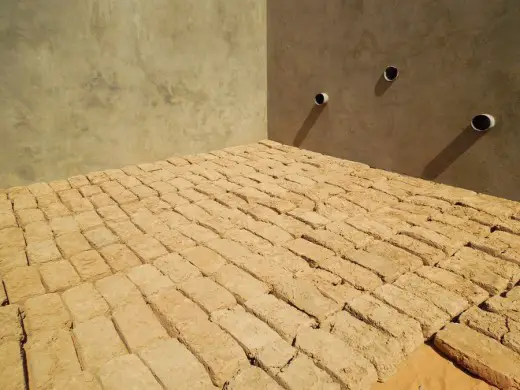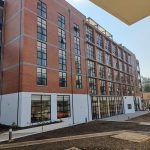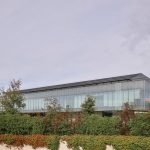60 Sandbags Classrooms, Mauritania School Architecture, Architect, Northwest Africa Education Design
60 Sandbags Classrooms
Education Center Building, Mauritania design by FARE Studio, Northwest Africa
18 Feb 2015
Location: Mbera refugee camp, Mauritania
Architects: FARE Studio
60 sandbags classrooms in Mbera refugee camp, Mauritania
60 Sandbags Classrooms in Mauritania, Africa
In Mauritania between 2012 and 2014 FAREstudio operated at the Mbera Refugee Camp as ‘construction expert’ for Italian NGO INTERSOS, an implementing partner of a UN agency within the framework of a primary education program aimed at improving teaching-and-learning provisions in the camp and nearby communities. The brief was to provide 60 classrooms, ‘transitional’ yet better, in terms of comfort and durability, than the tents usually provided to front an emergency. Mbera Camp is located in the southeast corner of Mauritania [50km from the Malian border] and provides hospitality to 68.000 refugees escaped from Mali after the 2012 crisis.
The region has a long history as a refugee destination: in the 1990s the area was occupied by displaced people from Mali; the remnants of those days are still in place in the form of two compounds, MBera I [Arab Berbers], Mbera II [Touareg]. These settlements are now consolidated to the point of being termed host communities, same as the nearby [20 km Northwest] village of Bassikonou. As expected, the local climate is very hot. Year-round temperature variations are contained, yet diurnal variations can be extreme. Rainfall is insufficient and irregular.
The Harmattan, a hot, dry and dust-laden wind, blows from the Sahara throughout the long dry season. Wind-borne dust is a scourge that afflicts the whole region, infiltrating every corner and making it easier to get used to it rather than trying to fight it.
Initially, FAREstudio’s construction expert was in charge of implementing an existing ‘design model’, setting off its production, selecting and coordinating a local works supervision consultant. The construction expert role included the ability to suggest design improvements, an opportunity that has been taken up in the light of the limitations found in the model received. Such model consisted in a simple hangar-like envelope of 8x5m based on similar structures already in use in the camp, with a steel and timber structural frame mounted on a concrete slab and completed by a corrugated iron roof and PVC sheets used as environmental enclosure. No drawings were available, only a very schematic Bill of Quantities for a total cost estimate of 3,300$ per unit.
The design, conceived by the Mauritanian Ministry of Education and de facto accepted by UNICEF and UNHCR, was a combination of the typical UNICEF prime intervention tent and the traditional Mauritanian tent, both with major limitations: the prime intervention tent performs badly in the usual wind-swept conditions of the area, while the traditional tent is not intended for didactic purposes. Moreover, the proposed materials – corrugated iron roof and PVC enclosure – would have resulted in a non-durable, and above all unbearable, ‘building’ for the users, both kids and teachers, in terms of comfort. In addition, the model would have featured a pole in the middle of the space.
In accordance with INTERSOS, FAREstudio decided to propose and test an alternative. The idea was simple and based on a straightforward assumption: since transport is expensive and sand largely available on site, sand should be the main construction material. On this basis, the sandbag technique came naturally to prominence.
The use of superimposed bags filled with sand as masonry, with cement plaster applied on chicken wire to both sides of the wall, is used in various parts of the world and can be regarded as a consolidated technique.
The classrooms are covered with a light roof structure realized with a sequence of curved metal trusses locally produced and based on a typology widely used in the area [production takes place in Bassikonou], then wrapped in a layer of PVC truck tarpaulin [9x7m].
The horizontal roof is aimed at minimizing the effects of wind and assuring natural ventilation and lighting in the internal room. It has a crucial role in the overall scheme because both of these conditions are rarely attained in traditional buildings or in what is locally produced.
Once the project reached its final configuration, a tender package was prepared and the contract awarded to a local contractor. As part of the contract, the General Contractor had to provide a prototype, verify and optimize technical choices, and familiarize the workers with the system.
After some initial reticence and stoppages, the prototype was discussed with all those involved, from UN Agencies (UNHCR and UNICEF) to refugee leaders, positively received, and eventually adopted.
Yet once he realized that his profit (largely based on transported materials) was going to be dramatically reduced by the new building technology (compared to the mark-ups possible with the ‘conventional’ model), the general contractor started a tough confrontation with the rest of the project team that led to his eventual setting aside. In the new formula, a sort of unusual, hybrid Construction Management arrangement, materials’ purchase, site coordination, suppliers selection and the rest are under FAREstudio’s control [and responsibility], with the valuable support of the local consultant.
The program started full production on December 2013 and by the end of July 2014 the 60 hangars are expected to reach completion in four different areas of Mbera camp. ‘Mass production’ of the units has introduced minor variations to the original scheme. The rectangular windows in the sandbag walls have been replaced by round openings at child’s eye height in order to enhance natural ventilation while allowing kids to glance outside the classroom. The position of the doors has also been modified so to have them on opposing walls.
In terms of the social impact of the project, such a labor intensive solution fosters a ‘cash for work’ strategy, which gives refugees the opportunity to earn some money by actually working. However, it must be stressed that even though no special competences are necessary and the skills required are basic, the construction technique is not immediately accessible. It demands training and cannot be regarded as a panacea for the informal building industry. The construction of the walls requires professional bricklayers, and the welded steel structure well trained workers. Nevertheless, unskilled workers can be employed, and the simplicity of the technique makes capacity-building a realistic perspective.
Once experienced the thermal performance of the prototype, its solidity, and its resistance against strong local winds (this in the occasion of a desert storm that hit the camp destroying the majority of other shelters), both the host community and the refugee leaders have been enquiring about the possibility to adapt the technique to other building types.
A major recognition for FAREstudio, given the circumstances.
60 Sandbags Classrooms in Mauritania – Building Information
Architecture Project: FAREstudio_Riccardo Vannucci, Joao Sobral
Location: Mbera refugee camp, Mauritania
Client: INTERSOS
Project: 2012
Construction works: January – July 2014
Construction coordination: FAREstudio -_Joao Sobral
Number of classrooms: 60
Cost per classroom: 3,000$
Classroom surface: 40sqm
Facts: built 60, future constructions 22
60 Sandbags Classrooms in Mauritania images / information from FARE Studio
Location: Mbera refugee camp, Mauritania, northwest Africa
African Buildings
Africa Architectural Projects
African Architecture
Aging in Africa, Cote D’Ivoire
Design: HWKN architects
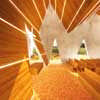
image courtesy of architects
Aging in Africa
Design: Dawoffice / David Garcia, Aina Tugores
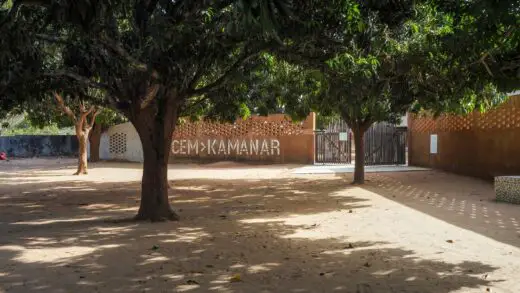
photo : Amir Anoushfar
CEM Kamanar Secondary School Senegal
National Teachers Colleges, near the towns of Kaliro and Mubende, Uganda
Design: Oubuntu-DASUDA & BKVV Architects
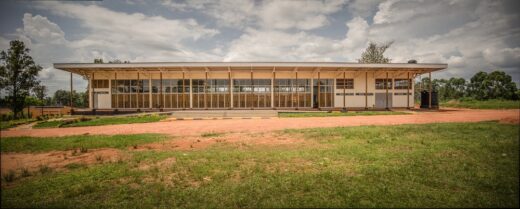
Eppo Karsijn
National Teachers Colleges, Mubende Uganda
British Council Building, Ethiopia
Design: British Council in-house architects
British Council Building Africa
Website: Rwanda
University of The Gambia – New Campus
Design: Snøhetta
University of The Gambia
Congo Schools for Article 25, Democratic Republic of Congo
Congo School Buildings
Comments / photos for the 60 Sandbags Classrooms in Mauritania design by FARE Studio page welcome.

